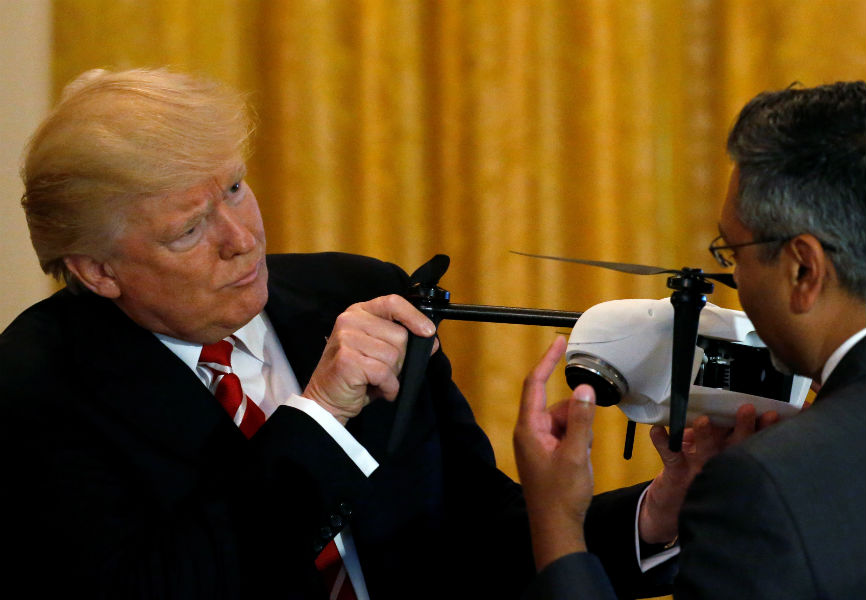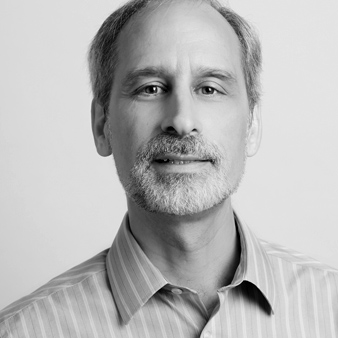can trump (and kushner) win over tech moguls?
President Trump last week presided over the first meeting of the American Technology Council, a star-studded advisory panel of top tech industry CEOs. Kicked off by the president's son-in-law, Senior White House Adviser Jared Kushner, the gathering brought together at least 17 high-tech company leaders last Monday for ten working sessions covering citizen services, cloud computing, data analytics, cybersecurity, big data, purchasing and contract reform, talent recruitment and retraining, government and private sector partnerships, H-1B Visas and future trends. Facebook boss Mark Zuckerberg was notable for his absence, apparently due to a scheduling conflict.
Many execs brought along staff covering the key issues. The discussions also featured college presidents—from Ohio State, North Carolina, and MIT. Officials from the White House's Office of American Innovation, which oversees the ATC, attended, as well as senior policy advisor Stephen Miller, Nation Security Advisor H.R. McMaster, and Homeland Security Advisor Tom Bossert (cybersecurity), Commerce Secretary Wilbur Ross, Treasury Secretary Steve Mnuchin, Secretary of Homeland Security John Kelly, and OMB Director Mick Mulvaney.
The White House – and Kushner specifically – are excited about the potential to transform the way government operates by harnessing the energy of the private sector. Of course, so was the Obama administration. President Trump talked of a “sweeping transformation” of federal technology that could result in $1 trillion of savings for taxpayers over a decade – echoing a number previously floated by a tech industry lobby group.
Not surprisingly, the cloud computing session discussed how the government might be able to shift the burden of managing its vast data center operations to the private sector, for example. Politically, while there is room for agreement with the administration on issues such as tax reform and a revamp of the H-1B skilled worker visa program, companies are also likely to remain wary of engaging too much given employees' (and in many cases, management's) personal opposition to the president's more nationalist and conservative social and economic agenda.
The mood at the meeting was definitely not euphoric, given all the remaining uncertainty about key issues of importance to tech leaders, such as immigration reform. It does not appear that additional tech leaders will prematurely jump ship from White House engagement as Elon Musk did, as there is still hope for exerting influence and keeping channels open on immigration in general and H-1B program reform in particular. As engagement may swing more towards Kushner's team at OAI/ATC, this is likely to keep the likes of Apple's Tim Cook and Amazon's Jeff Bezos coming back, to influence, monitor, and assess whether real opportunities will arise for their firms…. but that doesn't mean they have to like it.
The mood at the meeting was definitely not euphoric, given all the remaining uncertainty about key issues of importance to tech leaders, such as immigration reform.
The topic for last Tuesday was US tax policy as it relates to tech firms, while Wednesday the talk turned to agriculture and issues such as how to improve broadband internet access in underserved rural areas. It remains unclear how enhanced service would be financed. FCC Chairman Ajit Pai toured several Midwestern states in early June to discuss rural broadband access and the growing “digital divide”. While the FCC has some tools to help increase investment in rural telecommunications infrastructure, consumers in these areas will likely have to wait a long time for improvement. Pai said he hoped progress could be made “over the next decade.” So no live Facebook streaming in rural Iowa yet.
As the tech extravaganza continued, the White House and OAI also met on Thursday with leaders from the Silicon Valley venture investment community to hear about market areas where investors perceive regulatory uncertainty at play. One topic of discussion was the drone industry, which featured prominently in the meetings lined up for Thursday. Drone-related executives from Airspace, PrecisionHawk, and AirMap, minus leading Chinese drone maker DJI, hobnobbed with OAI and FAA officials to discuss rules under consideration trying to define where unmanned aerial vehicles are allowed to roam.
FCC Chairman Pai and major telecommunications CEOs were set to join the conversation on how the lack of federal regulation (or perhaps lack of updated regulations) could affect the fast changing technology sector and its increasingly level of connectedness. Fifth generation (5G) mobile technology was also part of the discussion. Ultrafast, high-bandwidth 5G networks are critical for enabling a host of next generation services, from autonomous vehicles, drones, smart cities, to sensors and other devices that will power the growing Internet of Things.
Under President Obama, the National Science and Technology Council (NSTCI) Committee on Technology issued a report late last year that highlighted the need to update regulations governing automated vehicles and unmanned aircraft systems that rely on AI. The report,
Preparing for the Future of Artificial Intelligence, was put out under the Office Science and Technology Policy (OSTP). The Thursday meetings were organized by OSTP, now headed by Michael Kratsios, the White House CTO. Kratsios is closely associated with early Facebook investor and serial entrepreneur Peter Thiel, whom he served as chief of staff. So far, the new administration has not named a new Director of OSTP, who also serves as the Assistant to the President for Science and Technology and manages the NSTC.
The industry is pleased that the White House is in listening mode, particularly on how to regulated emerging technologies.
It remains to be seen if the OAI, along with OSTP and other key technology regulatory players will be able to continue to drive and keep open a vigorous dialogue with the high tech industry on the range of issues that federal regulators face. The industry is pleased that the White House is in listening mode, particularly on how to regulated emerging technologies, but it may be wary of being seen to be too close to the administration on some issues.
Finally, despite all the talk about innovation and leveraging technology to fix government and societal problems, the new administration has proposed budgets that would reduce or gut a number of high-tech programs across government. Congress is likely to shoot some of these down, but clear signs of a desire to have the government play a leadership role rather than cheerleading on STEM issues going forward remain lacking.
For more context on what Silicon Valley means for the White House check out our
Top Risks 2017 report from earlier this year.

 U.S. President Donald Trump (L) looks at a drone with Kespry CEO George Mathew (R) during an event highlighting emerging technologies, in the East Room at the White House in Washington, U.S., June 22, 2017. REUTERS/Jonathan Ernst - RTS188CB
U.S. President Donald Trump (L) looks at a drone with Kespry CEO George Mathew (R) during an event highlighting emerging technologies, in the East Room at the White House in Washington, U.S., June 22, 2017. REUTERS/Jonathan Ernst - RTS188CB
